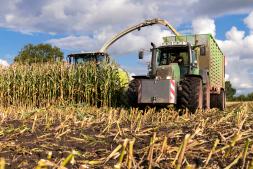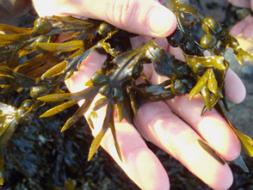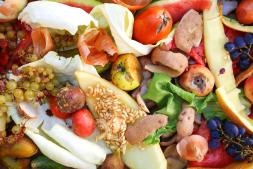
Forests, seas, freshwater, agricultural systems, and even our biological waste can contribute to mitigate climate change, preserve biodiversity, and produce new goods. This is why biomass plays an important role in the European Green Deal.
A new JRC report on Biomass supply and uses in the EU shows that, while the EU is increasingly resource-efficient with improved wood, food, and other bio-waste re-use and recycling, it is also producing and consuming more biomass overall. The trend in biomass supply is increasing from both primary domestic production and secondary sources. The report highlights that, while biomass can play an important role in fuelling the European Green Deal, it is a limited resource.
How much biomass are we producing and using?
The total sources of biomass in the EU, which includes domestic production and net imports, amounts to approximately 1 billion tonnes of dry matter (tdm), whereas the uses amount to 1.2 billion tdm. The additional biomass in uses with respect to sources is due to the recovery of waste from industry and households. The EU is sourcing more biomass over time, both from primary (virgin) sources, and secondary sources (by-products and waste).
Agriculture

Almost 70% of the biomass supply is from the agricultural sector, which includes food, residues collected, and grazed biomass. The biomass produced in the EU for food purposes (including inputs), amounts to roughly 500 million tonnes of dry matter (Mtdm) in a year, of which roughly 100 Mtdm are plant-based food.
Forestry

Much of the remaining biomass sources (27%) are from forestry. It is estimated that 551 Mm3 (Million cubic metres) were removed from forests in 2017 (including bark). Secondary wood (wood chips and particles; black liquor), amounted to 179.6 Mm3 in the same year. The felling rate in forests for 2020 is 77% for merchantable fellings and 88%, all fellings considered. The fellings rate has increased this past decade at EU level, which is partially explained by natural disturbances and the resulting salvage logging operations.
Fisheries and aquaculture

The supply of fish from aquaculture reached 1.1 million tonnes in 2020. As to marine fishing, roughly 3.9 million tonnes of seafood (including fish) were landed from EU waters in 2020. There has been a reduction in the EU seafood supply and economic performance from marine fishing since 2016-17, due to the efforts to reduce overexploitation, and to external factors such as Brexit, the impact of the COVID-19 pandemic and, more recently, high fuel prices.
Seaweed

Seaweed is an increasingly important source of biomass. Macroalgae play an important role in marine ecosystems, contributing to the global primary production and supporting complex food webs in coastal zones. They are a valuable resource in the European bioeconomy, mainly by the food and chemical industries. EU countries imported 157.3 thousand tonnes of seaweed products in 2019 (measured in net product weight) and exported a total of 89.5 thousand tonnes. In 2020, the traded products increased, with the imports amounting to 173.4 thousand tonnes and the exports to 98.3 thousand tonnes.
Waste

2023
Waste is also an important source of biomass. The bio-waste generated in the EU in 2018 amounted to 147 Mtdm, of which 133 Mtdm were recovered either as recycled new material or for energy recovery. This bio-waste comes from both industry and households. The remaining bio-waste that is not recovered is either landfilled or incinerated without recovery of energy.
Conclusions
The report confirms a trend in increase in biological resource efficiency at EU level, but also an overall increase in supply and uses of biomass, including from virgin sources. While this could indicate that the bioeconomy is gaining traction, the report concludes with a warning about biomass availability: although biomass is a renewable resource, it is limited and can only fuel the European Green Deal to a certain degree.
Background
We need good, overarching, coherent and visionary governance to ensure that ecosystems are not overexploited, while biomass is acknowledged to be a valuable resource in the bioeconomy. Recognising the need for a balanced, wide-ranging and scientifically robust approach to assess the status and trends of biomass sources and uses, the European Commission has committed to a long-term mandate to provide data, models and analyses on the supply and demand of EU and global biomass, as well as its environmental, social and economic sustainability. For more on the JRC Biomass Mandate, please visit the dedicated page in the Knowledge Centre for Bioeconomy.
Source
Joint Research Centre, press release, 2023-12-11.
Supplier
European Commission
Joint Research Centre (JRC)
Share
Renewable Carbon News – Daily Newsletter
Subscribe to our daily email newsletter – the world's leading newsletter on renewable materials and chemicals













